Amap Cartes
Amap Maps est un serveur qui prend en charge tout client du protocole MCP, permettant aux utilisateurs d'utiliser facilement le serveur MCP Amap Maps pour divers services basés sur la localisation.
Aperçu
Qu'est-ce qu'Amap Maps ?
Amap Maps est un serveur qui prend en charge tout client MCP, permettant aux utilisateurs d'utiliser facilement le serveur Amap Maps pour divers services basés sur la localisation.
Comment utiliser Amap Maps ?
Pour utiliser Amap Maps, configurez-le dans un client compatible comme Cursor en copiant votre clé API et en configurant la commande du serveur comme spécifié dans la documentation.
Caractéristiques clés d'Amap Maps
- Prend en charge plusieurs services de localisation, y compris la géocodage, la météo et la mesure de distance.
- Fournit des API pour divers modes de transport, y compris la marche, la conduite et les transports en commun.
- Permet des recherches détaillées de points d'intérêt (POI) basées sur des mots-clés ou des emplacements.
Cas d'utilisation d'Amap Maps
- Conversion des coordonnées géographiques en adresses administratives.
- Planification d'itinéraires pour le vélo, la marche ou la conduite.
- Recherche de points d'intérêt à proximité en fonction de critères définis par l'utilisateur.
FAQ d'Amap Maps
-
Quels types de services de localisation Amap Maps fournit-il ?
Amap Maps fournit des services de géocodage, des informations météorologiques, des mesures de distance et de planification d'itinéraires pour divers modes de transport.
-
Y a-t-il une limite au nombre de requêtes que je peux faire ?
Les limites d'utilisation dépendent de la clé API et du service spécifique utilisé. Veuillez consulter la documentation d'Amap pour plus de détails.
-
Comment obtenir une clé API ?
Vous pouvez obtenir une clé API en créant un projet sur la plateforme de développement Amap.
Détail
Clients supporting the MCP protocol (e.g., Cursor, Claude, Cline) can easily use the Amap Maps MCP server. Currently, it supports MCP (SSE) and Node.js I/O connection methods.
1. Accessing MCP Service via SSE on the Cursor Platform
1.1 Install Cursor
It is recommended to use the latest version of the Cursor client. Install Cursor.
Note: Please log in to your Cursor personal account to use large model features.
1.2 Configure SSE Connection in Cursor Settings
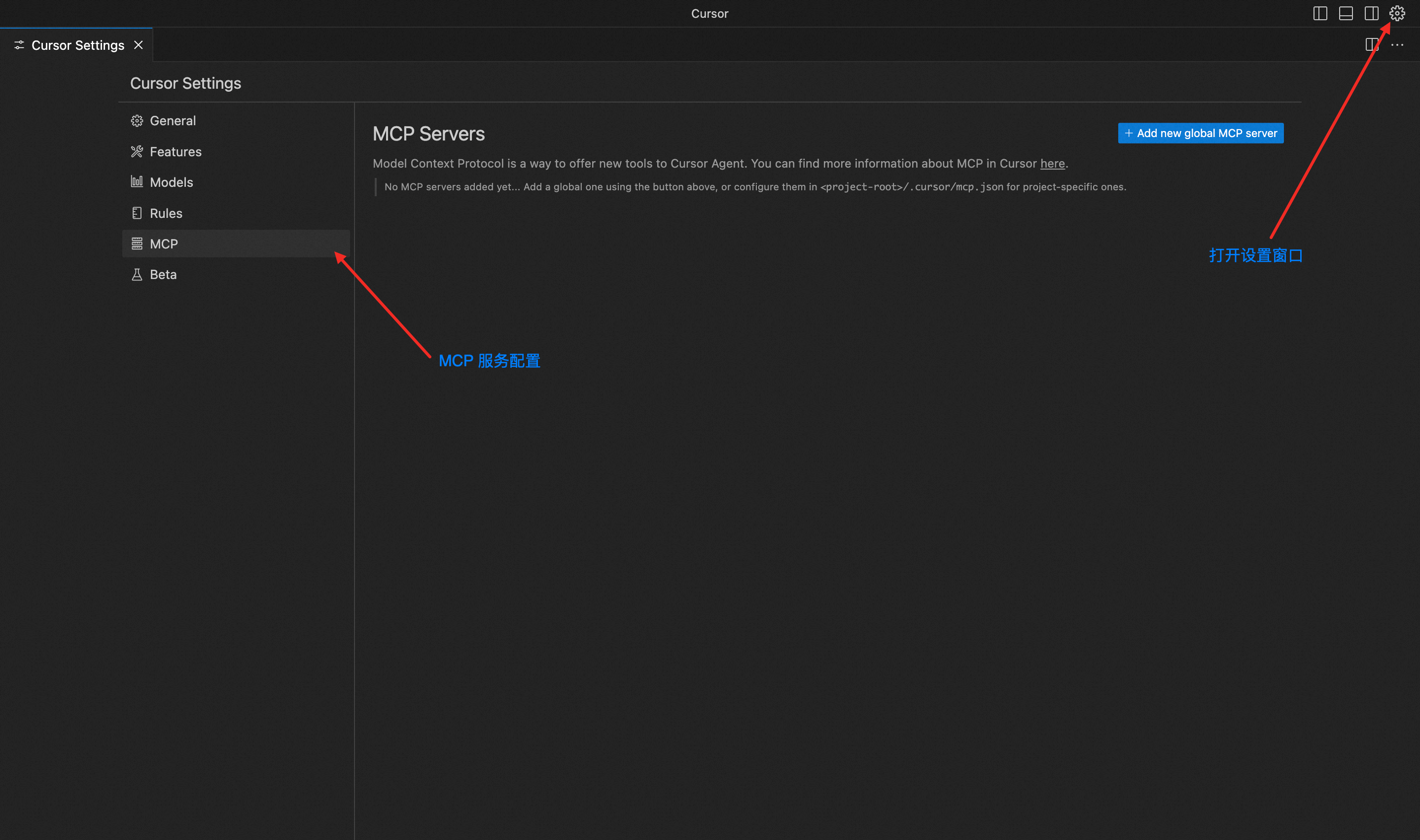
1.3 Add a New MCP Server Configuration
{
"mcpServers": {
"amap-amap-sse": {
"url": "https://mcp.amap.com/sse?key=<your_key>"
}
}
}
1.4 Check MCP Service Tool Status in Cursor Settings

Tip: If a "Client closed" error occurs, click the Enabled button to resolve it, as shown below:

1.5 Select a Large Model for Better Experience
It is recommended to choose claude-3.7-sonnet.
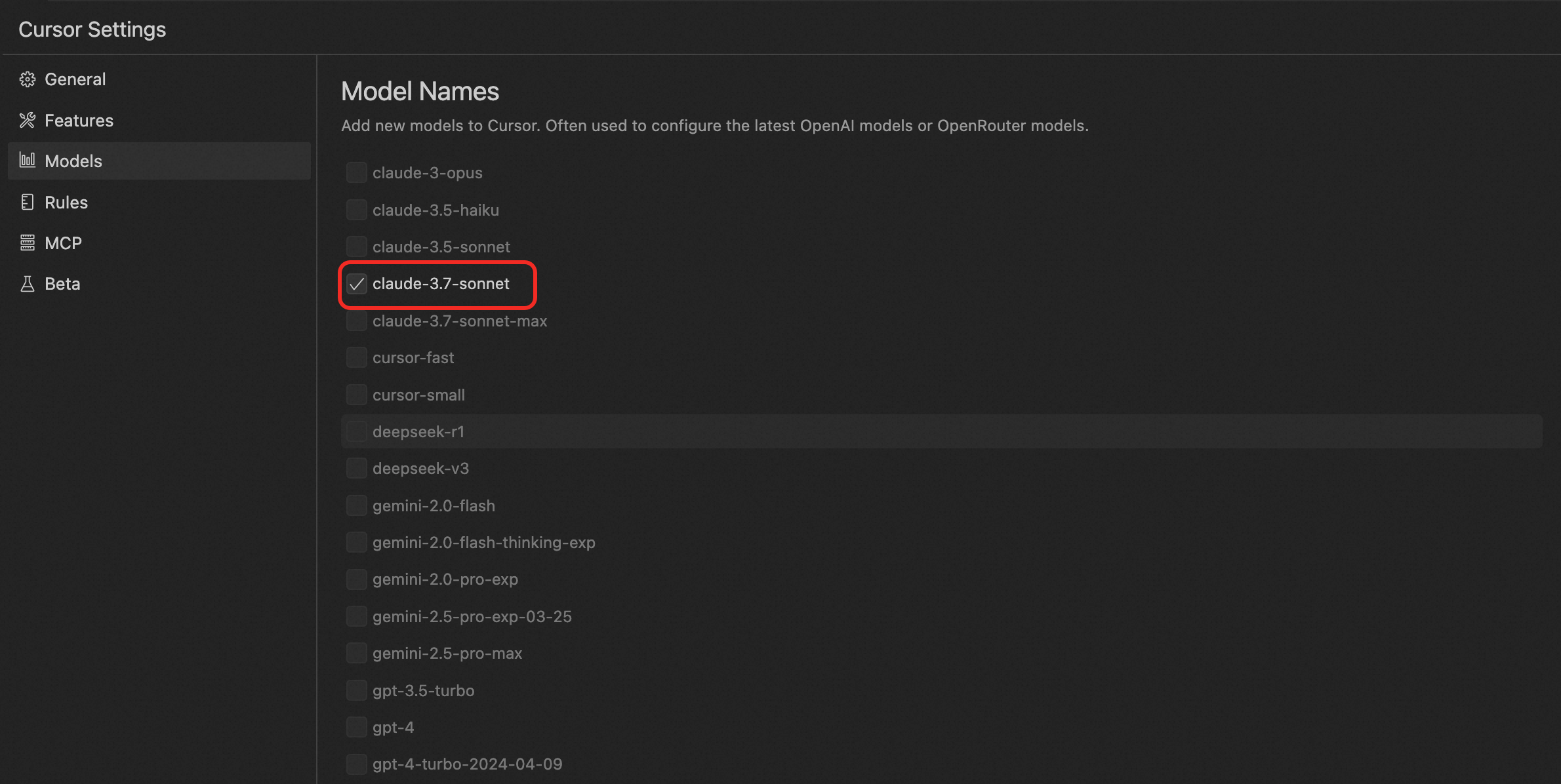
1.6 Model Interaction Mode: Select Agent Mode
Press CTRL/CMD + L to open the dialog box on the right side of the editor.

1.7 Start Using
Learn how to use Amap MCP for planning scheme design and map visualization scenarios. Refer to Application Cases.
2. Accessing MCP Service via SSE with Spring AI
2.1 Configuration
spring.ai.mcp.client.connection-timeout=60s
spring.ai.mcp.client.type=ASYNC
# Note: Do not include the Amap SSE connection in the configuration file
2.2 Add Configuration Class
@Configuration
public class McpConfig {
@Bean
public List<NamedClientMcpTransport> mcpClientTransport() {
McpClientTransport transport = HttpClientSseClientTransport
.builder("https://mcp.amap.com")
.sseEndpoint("/sse?key=<your_key>")
.objectMapper(new ObjectMapper())
.build();
return Collections.singletonList(new NamedClientMcpTransport("amap", transport));
}
}
2.3 Usage
@Autowired
List<McpAsyncClient> mcpAsyncClients;
@RequestMapping("/test")
public Mono<McpSchema.CallToolResult> test() {
var mcpClient = mcpAsyncClients.get(0);
return mcpClient.listTools()
.flatMap(tools -> {
logger.info("tools: {}", tools);
return mcpClient.callTool(
new McpSchema.CallToolRequest(
"maps_weather",
Map.of("city", "Beijing")
)
);
});
}
2.4 Start Using
Learn how to use Amap MCP for planning scheme design and map visualization scenarios. Refer to Application Cases.
3. Accessing MCP Service via Node.js I/O on the Cursor Platform
3.1 Install Node.js
Download the Node.js application suitable for your operating system.
Tip:
- Ensure Node.js is installed and check that the local Node.js version is v22.14.0 or higher. It is recommended to use v22.14.0 or above for optimal compatibility and performance.
- Verify that the npm registry is set to the default source (https://registry.npmjs.org/).
Check command:
npm config get registry
3.2 Install Cursor
It is recommended to use the latest version of the Cursor client. Install Cursor.
Note: Please log in to your Cursor personal account to use large model features.
3.3 Configure MCP Server in Cursor Settings
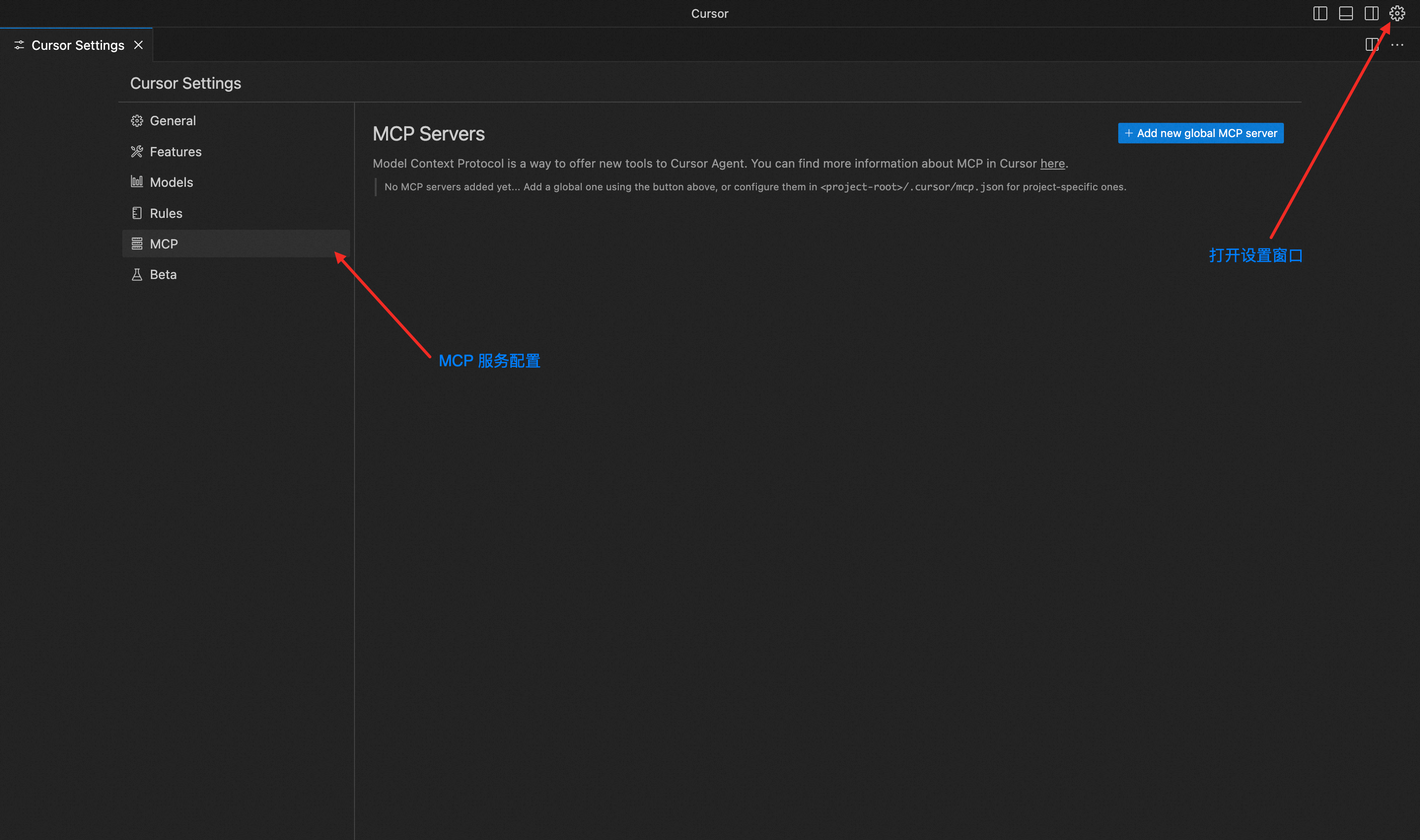
3.4 Add a New MCP Server Configuration
{
"mcpServers": {
"amap-maps": {
"command": "npx",
"args": ["-y", "@amap/amap-maps-mcp-server"],
"env": {
"AMAP_MAPS_API_KEY": "<your_key>"
}
}
}
}
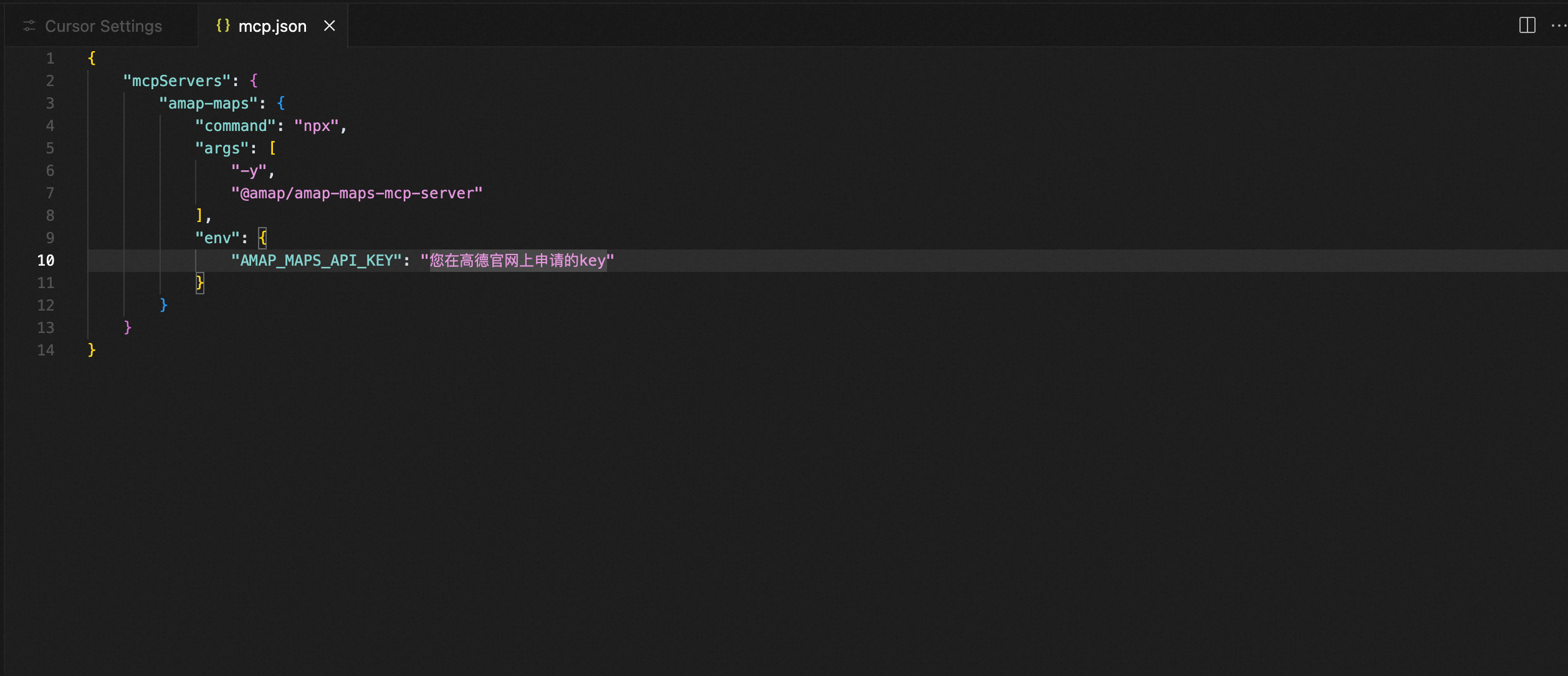
3.5 Check MCP Service Tool Status in Cursor Settings
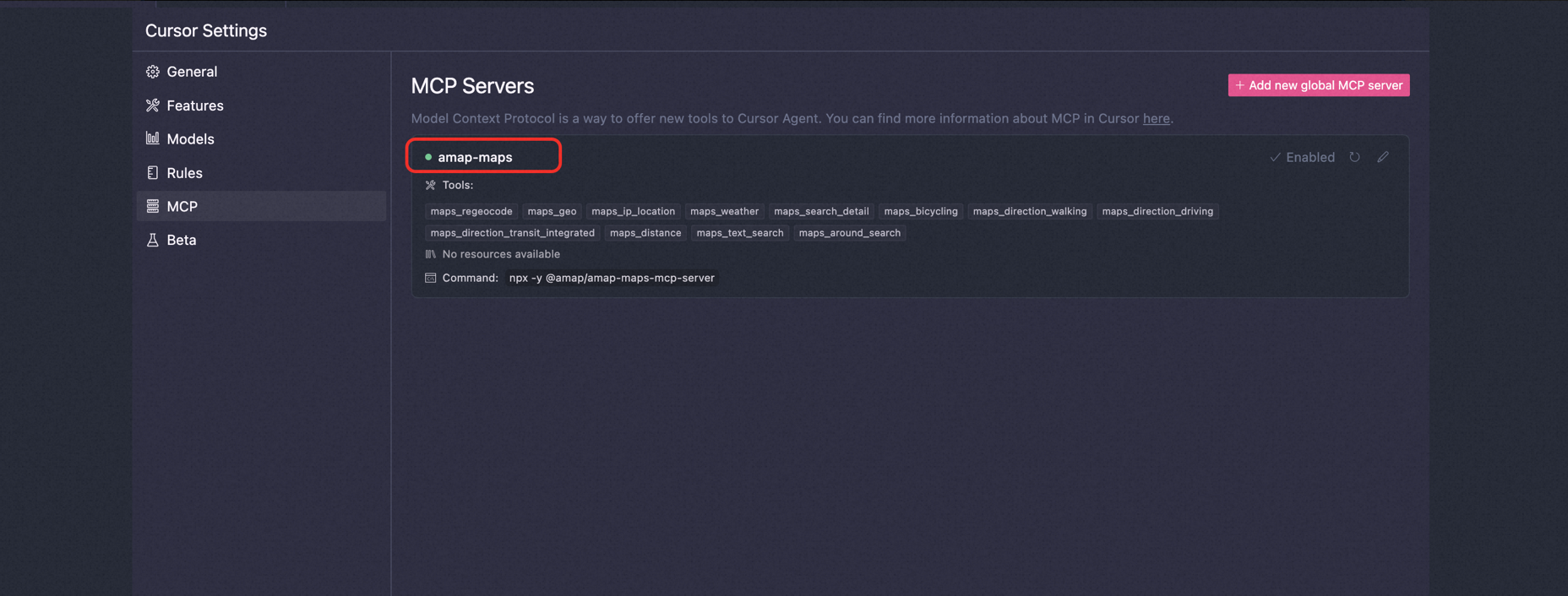
The MCP Server — amap-maps Tools status is normal and available, as shown above.
Tip: If a "Client closed" error occurs, click the Enabled button to resolve it, as shown below:
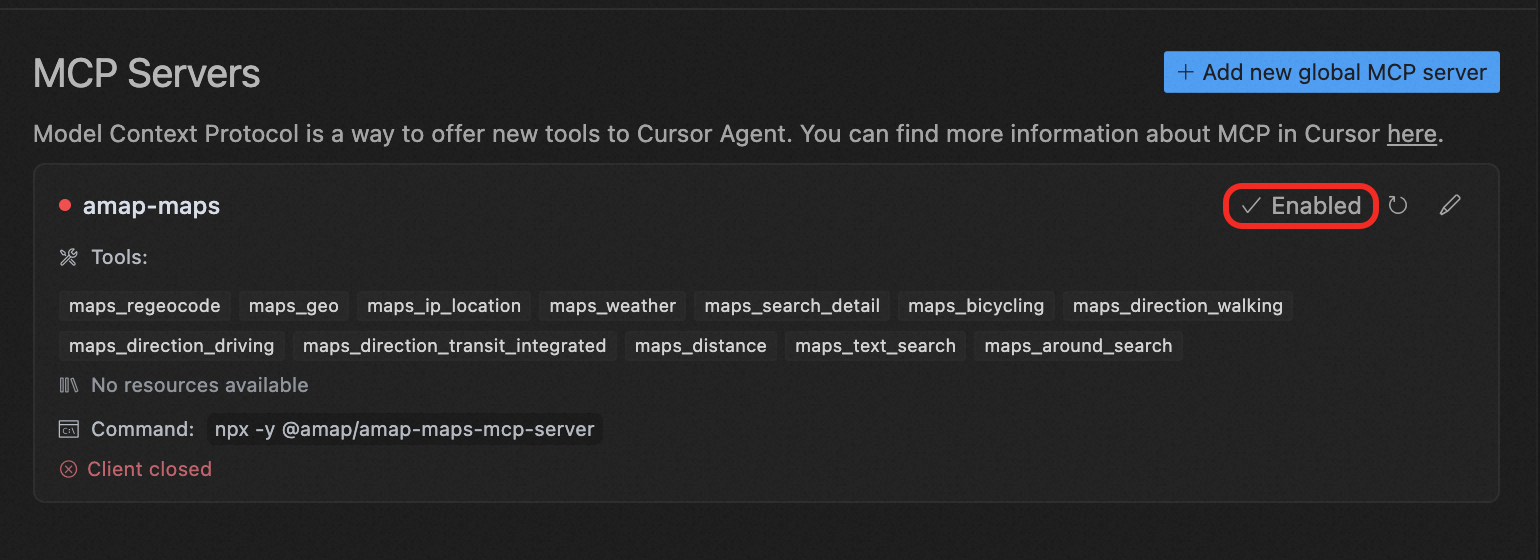
3.6 Select a Large Model for Better Experience
It is recommended to choose claude-3.7 unitàsonnet.
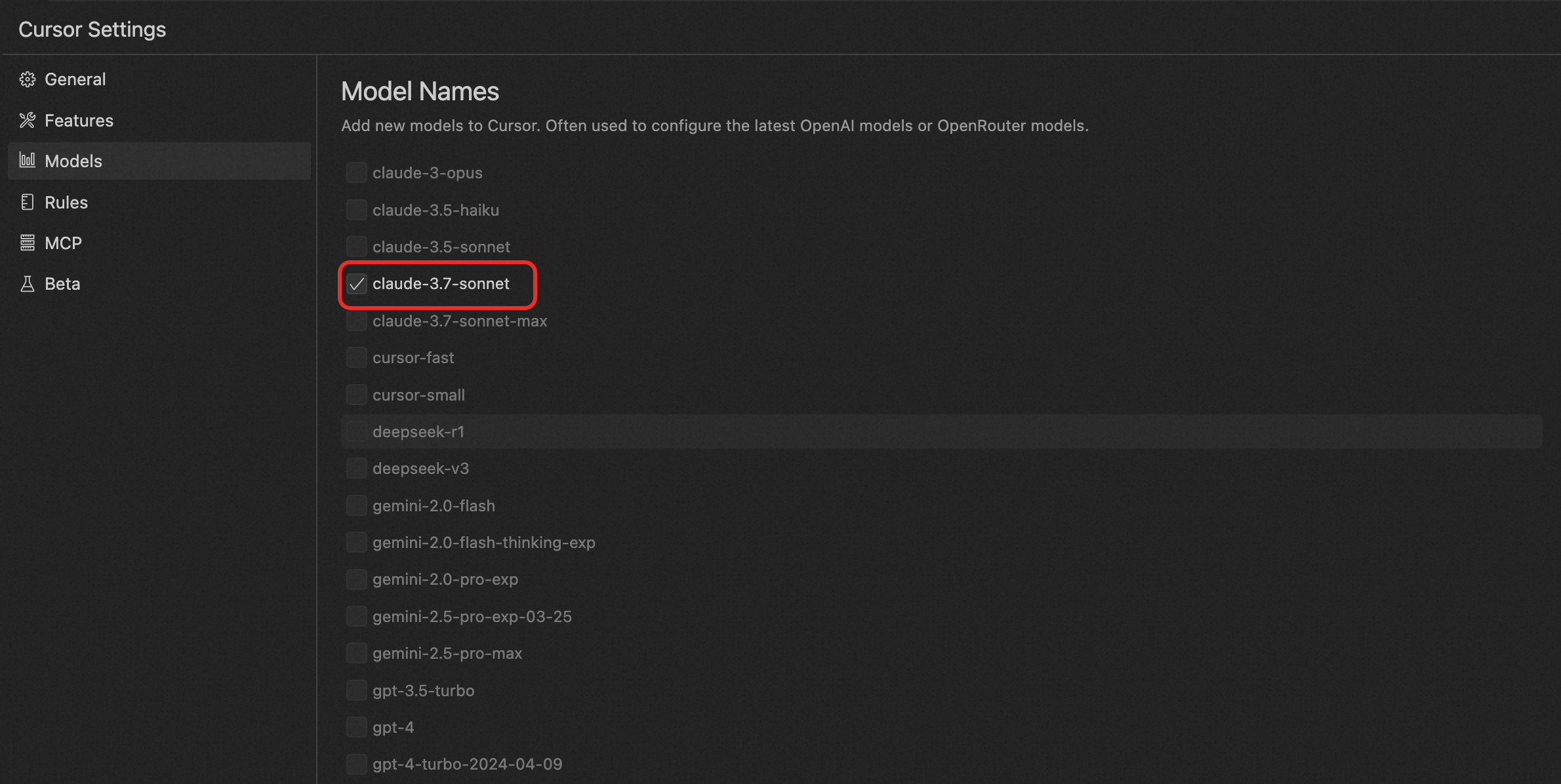
3.7 Model Interaction Mode: Select Agent Mode
Press CTRL/CMD + L to open the dialog box on the right side of the editor.

3.8 Start Using
Learn how to use Amap MCP for planning scheme design and map visualization scenarios. Refer to Application Cases.
Configuration du serveur
{
"mcpServers": {
"amap-maps": {
"command": "npx",
"args": [
"-y",
"@amap/amap-maps-mcp-server"
],
"env": {
"AMAP_MAPS_API_KEY": "api_key"
}
}
}
}